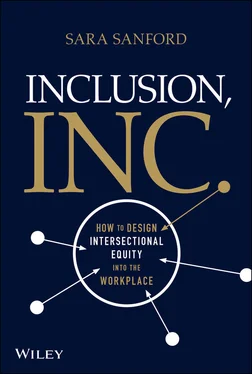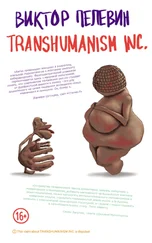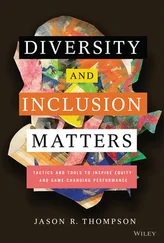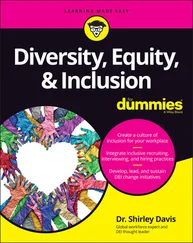A moment later I found myself standing. I was on my feet, an involuntary reaction, irrepressible. I was not weighing questions of correctness; it was far more basic. Somehow I thought I could not be the only one, but around the table my colleagues were only staring, staying seated, saying nothing.
“Oh honey, sit down, don't get upset,” Irene urged.
Nervous laughter rattled through the room.
My hands went cold. How could I be the only one? They all said they cared. They made public statements. What are they doing? Why is nobody saying anything?
A roar was audible from the kitchen. The Cubs had gone ahead.
When my voice came, it was shaking. “Back in your day,” I reminded Irene, “you wouldn't be sitting at this table. Back in your day , you wouldn't have been taken seriously as a woman in this profession. We're all here tonight because we don't want to go back to that time.”
An exec nervously pushed around chunks of his surf and turf. I picked up my purse and coat, gave the castle doors one last shove, and left.
I rushed past the servers waiting to clear our table, out of the restaurant, and into a lone taxi waiting like a lifeboat.
On the way back to the hotel, triumphal horns blared throughout the city. I wanted to rejoice with my euphoric driver, but I was stunned.
I was not a victim in this situation. Nor was I a hero—I was simply mistaken. I thought that because our company had invested in these inclusion initiatives, our culture had actually changed. I thought the executives sitting at that table who had stated their commitment to diversity and attended trainings would have stood with me. I didn't think I was going to be alone.
We had checked all the right boxes, but the unspoken code of conduct hadn't changed. We had had our moment of truth, and nobody stood up.
And by running the programs that let us think we were the good guys, I was complicit.
How had this happened?
≈
The following Monday, I got the call from HR: My position no longer existed in the organization. I was terminated, effective immediately. The reason given was a recent merger. I knew about that merger. I had helped coordinate the resulting reorg, and I knew that all staffing decisions had been made months ago, so I found this difficult to believe. Either way, we were happy to part ways.
A few months later, I attended a CEO panel at the top of Seattle's World Trade Center. The topic: What Does It Mean to Be an Effective Leader?
The year was 2017, and the #MeToo hashtag had turned into a rallying cry for millions. Social activist Tarana Burke had coined the phrase in 2006 to build solidarity among survivors of abuse. More than a decade later, Alyssa Milano retweeted the phrase one night, and by morning, a movement was born. Around the world, women were taking the secrets they had kept inside whisper networks out into the international spotlight. Hollywood's leading ladies founded Time's Up to cover legal costs for victims seeking justice. Everywhere I went, I heard “Me Too.”
Tarana Burke held the movement accountable, continuing to speak out for women who weren't going to be protected and still had to show up to hostile workplaces every day. For the movement's legacy to have meaning, she argued, employers would need to take meaningful action. It was up to business leaders to take the next steps.
In the audience at the Trade Center, I was waiting to see which CEO was going to take that next step. The panelists spoke about managing growth in a quickly scaling business, retaining customers in the face of increasing competition, and the impact of artificial intelligence on their industries. For all these topics, they had best practices, data, evidence, key performance indicators, and actionable takeaways.
Then the moderator asked the question I had been waiting for: “What is your approach to diversity, equity, and inclusion?”
A silent pause. Chairs creaked as the panelists' postures changed, their legs uncrossed and recrossed, they leaned backward slightly, getting a little distance from the microphone. Women in the audience made eye contact with each other. I realized many of us were holding our breath.
Finally, one of the panelists took the mic. It was the first time I had heard hesitation in any of their voices. The brave volunteer paused after each word, as if looking for approval that he was on track. Like a spelling bee contestant, he was waiting for each syllable he spoke to be the one that would disqualify him:
“Honestly…my…my approach to DEI…Well, I…I lead with love.”
The others followed:
“Everyone at our company knows that we care about diversity. We don't have an [air quotes] approach [end air quotes] as much as it's just in our DNA.”
“Every day, I come in being my most authentic self, and I think that lets everyone else know they can be their authentic self, no matter their background or gender.”
Polite applause.
These answers cited no data. No best practices. No KPIs. No plan.
No next steps.
≈
Fast-forward to three years later. In the summer of 2020, in the wake of George Floyd's murder, corporate statements of solidarity flooded LinkedIn feeds. CEOs publicly renewed their pledges of commitment to racial justice, to equity, to inclusion. The Black Lives Matter movement had gained unstoppable momentum, and business leaders felt the pressure to vocally reaffirm their support of Black communities.
I was living in Seattle's Capitol Hill neighborhood at the time, three blocks from the East Precinct that had become the movement's infamous ground zero. I think the zone's temporary residents in tents and makeshift shelters were still deciding whether they were occupying the Capitol Hill Autonomous Zone (CHAZ) or the Capitol Hill Organized Protest (CHOP). Clickbait-seeking helicopters had become my round-the-clock white noise reality. From my apartment balcony on the third floor, Seattle's downtown peaks floated above Puget Sound. The corporate trapezoids of the financial district cut the skyline in business-casual shades of blue and silver.
Down on the street, at metropolitan basecamp, Black lives mattered. “I'd rather repaint gray buildings than bury my Black friends!” a leader of the movement shouted across the street through a bullhorn. In the afternoons, teenagers marched—hundreds of middle school and high school students under my window together, singing, making sure everyone knew the words to the songs that drowned out the helicopters. I felt hopeful, knowing that this time, their voices hadn't just reached my windows and faded out. They had traveled beyond, to those downtown windows, to the top floors.
Employees and consumers were demanding a new level of accountability, and national publications held CEOs to account, to ensure that they were walking their talk. For the first time in years, business leaders were forced to revisit their diversity data.
An email showed up in my inbox from a colleague who had attended the CEO panel with me three years earlier. Subject line: “Lead with Love.” He had forwarded me an article calling out executives who had made very public statements over the previous few years that they valued diversity, that it was “baked in” to their companies' cultures. The feature was a two-page spread. On the left side, dossiers of the self-proclaimed Good Guys and their solidarity statements. On the right, diversity reports from the companies they oversaw. A decade of diversity data showed little to no progress, year after year, with some companies regressing. The CEO who proclaimed “I lead with love” as his guiding DEI philosophy had the largest photo. The caption below: “Leadership or Lip Service?”
Good Intentions, Few Results
Читать дальше












